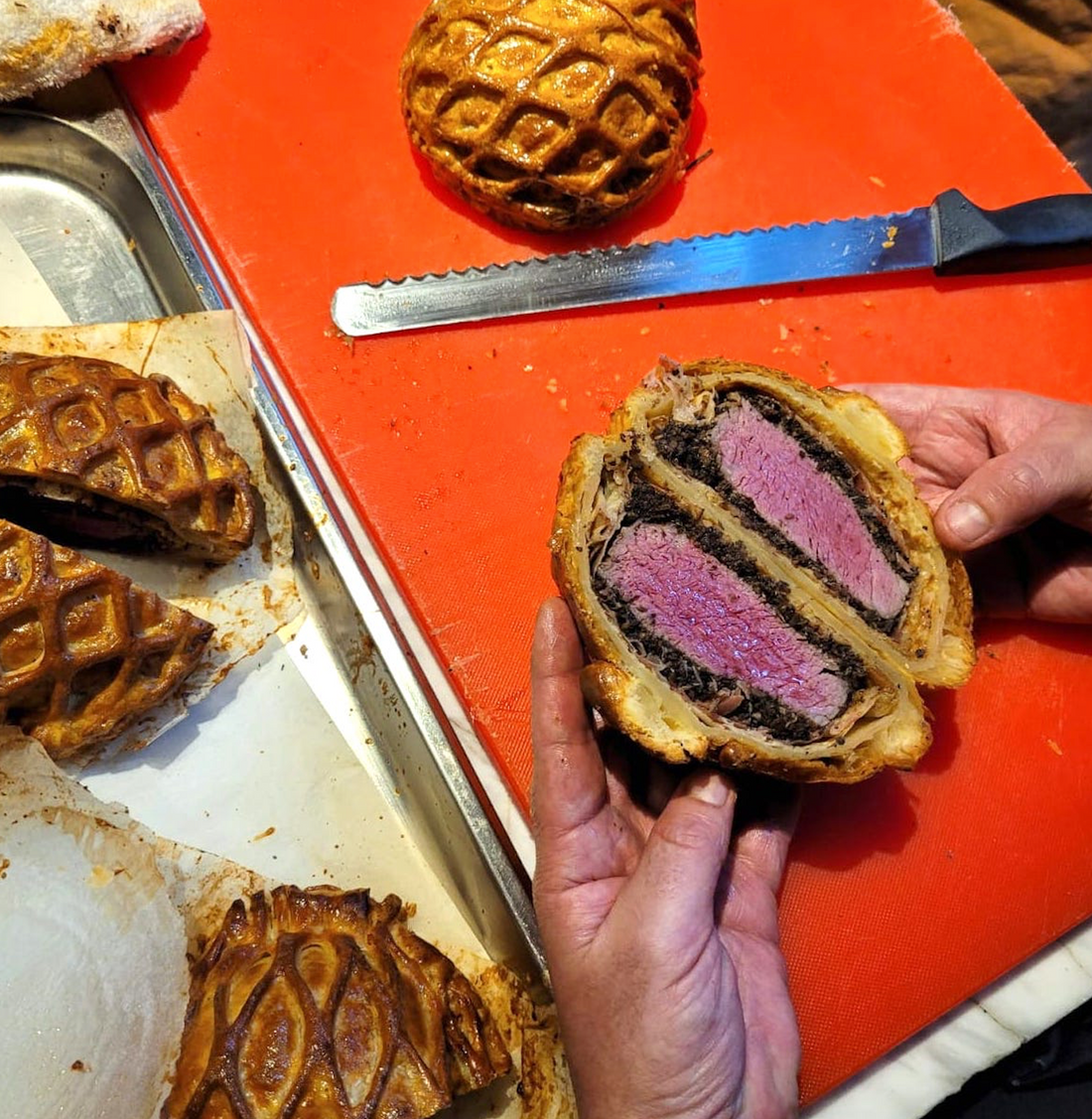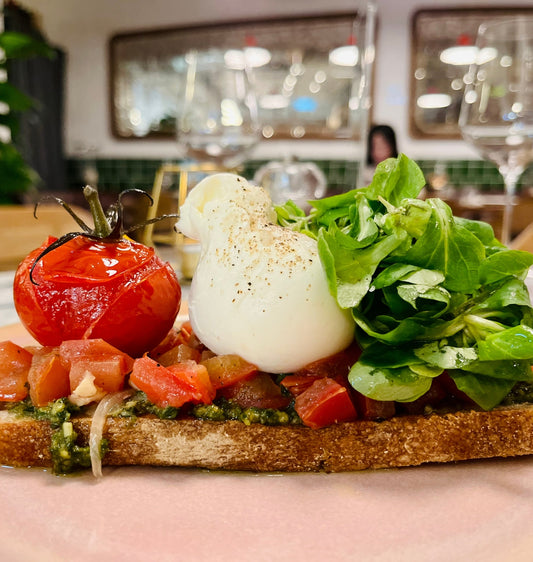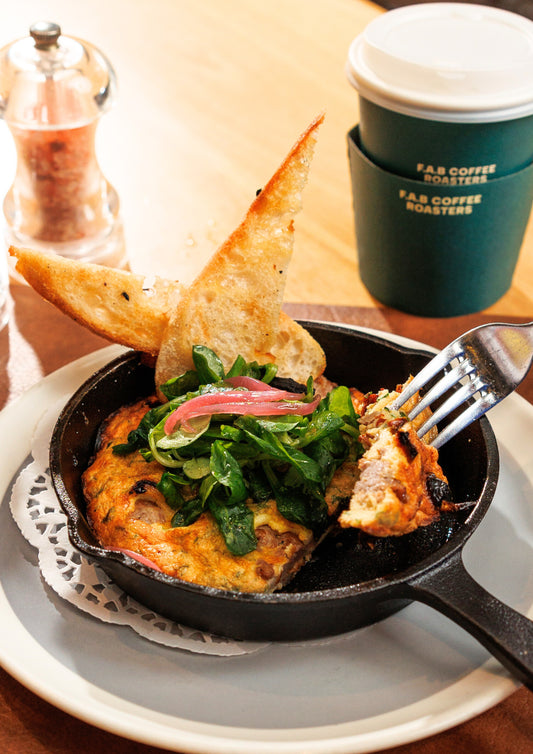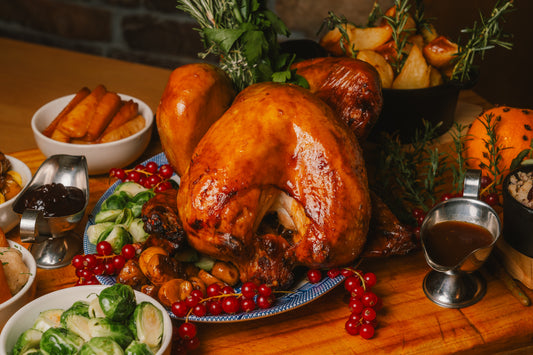
Beef Wellington Recipe
Premium beef tenderloin cooked to perfection, wrapped in layers of savoury condiments and puff pastry baked till golden brown. A culinary challenge well worth accepting, let us show you how.
Sometimes the mood strikes you to get in the kitchen, and we mean really get in the kitchen and get stuck into a culinary project with stages, elements, pinch points, and ultimately a show stopping reward for all your hard work. Beef Wellington is not for the faint of heart, it’s not something you make on a whim on a Tuesday night, it’s something you’ve been meaning to try for a while and that you’ll mention in conversation that you recently accomplished.
The recipe below is not impossible, it just takes some perseverance and commitment to get through. We’ve actually included a few ‘short cuts’ to make the mountain just a little bit more ‘summit-able’ (ready made crêpes, frozen puff pastry) but they won’t diminish you sense of achievement in the slightest.
Written instructions are all well and good, but somethings are difficult to put into words. If you’re really seeking to master the inimitable Beef Wellington, then you simple must enroll in one of our masterclasses. There you’ll have a chance to try each step for yourself with the guidance of an expert to correct your technique and share a wealth of insider tips and tricks to produce the perfect Wellington.
How do you make Beef Wellington?
Ingredients
A 1kg beef tenderloinSalt & pepper
Olive oil
250g mushrooms of your choice
50g butter
1 sprig of thyme, leaves picked
100ml of white wine
2 tsp truffle oil
2 tbsp Dijon or English mustard
12 slices of parma ham
4-6 ready-made crêpes
500g puff pastry, thawed
A little flour, for dusting
2 egg yolks
1 tbsp milk
Method
1. Sear the tenderloin
Set your largest frying pan over high heat and while it heats up, sprinkle the tenderloin (in one whole piece) with salt and pepper. Roll it around the board to make sure every face is thoroughly coated.
Add oil to the pan, then still cold from the fridge, sear the tenderloin on all sides until it is browned on the outside, but still quite rare in the middle (between 30 and 60 seconds per side). Stand it up in the pan and brown the ends too. Add a little oil as you turn the meat around if you feel it is needed. Remove from the pan and return to the fridge to chill.
2. Make the duxelles
Chop the mushrooms very finely. You can use a knife or a food processor. Be cautious with the food processor though, use the pulse setting to avoid the mushrooms becoming too fine and mushy.
Add 2 tbsp of olive oil and all the butter to a pan over medium heat, add the mushrooms, thyme leaves and a good pinch of salt and pepper and saute for 10 minutes, stirring often while the mushrooms soften.
Add the wine and cook for 10 minutes or until all the wine has been absorbed.
Transfer out of the pan, stir through the truffle oil and set aside to cool.
3. Layer and wrap
Lay cling film on a clean surface. Then make a layer of crêpes, parma ham then half the mushroom duxelles. Take the seared tenderloin out of the fridge and brush liberally with mustard. Lay the tenderloin on top of the duxelles then add the rest of the duxelles to the top. You are aiming for an even layer of duxelles surrounding the whole tenderloin, just do your best.
Lay it in ‘landscape mode’ length ways parallel to you, and lift the edge of the cling film closest to up and over the meat. Perhaps your ‘kitchen hand’ can help you tuck the duxelles in neatly to avoid and bulges or bare patches. Then continue to roll away from your body until it is totally rolled up.
Carefully tuck the ends of the ham and crêpes up, tucking any escaped duxelles inside. Wrap it tightly in the cling film. You can repeat this process with a second layer if you feel it will help get it nice and tight. Then, back into the fridge once again.
4. Prepare the pastry
Dust your surface and rolling pin with a little flour. Roll out the pastry to about 5mm thick and large enough to encase your whole wrapped tenderloin. Now is the time to prepare any decorative pastry you’d like to add. You can cut leaf shapes quite easily with a pairing knife, use cookie cutters or a lattice cutting roller.
5. Wrap once more
Mix the two egg yolks with the milk in a small bowl to make ‘egg wash’. Remove the cling film and roll your wrapped tenderloin in the prepared pastry, using some egg wash to seal any edges. Tuck the ends up like a Christmas present using more egg wash to seal. Position your Wellington with the seam side down on an oven sheet lined with baking paper and paint it generously with egg wash. Add any decorative pastry pieces you like and give it all a second ‘wash’.
The trick here is to work quickly. The pastry needs to stay cold, if you can make the kitchen a little chilly while you’ve got the pastry out, all the better. One final stint in the fridge, chill for as little as 30 minutes or up to 24 hours.
6. Bake and serve.
Forty minutes before dinner time, preheat your oven to 200°C. Bake your Wellington for 20-25 minutes for medium-rare, 30 minutes for medium. Rest for 5 minutes before slicing and serving.
Your amazing Beef Wellington can be the centrepiece of a whole Christmas feast or it can be served with simple sides such as mashed potatoes, garlicky green beans or red wine sauce.



